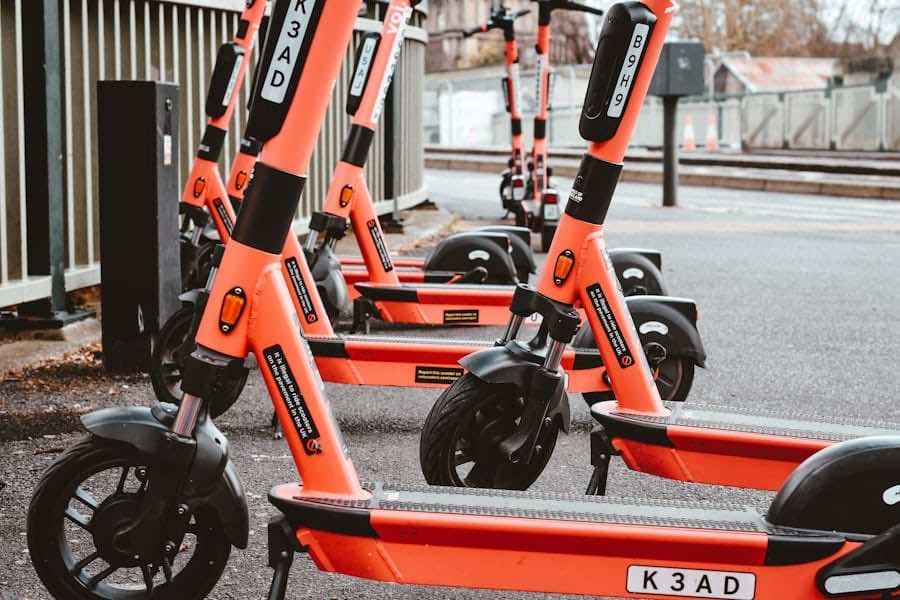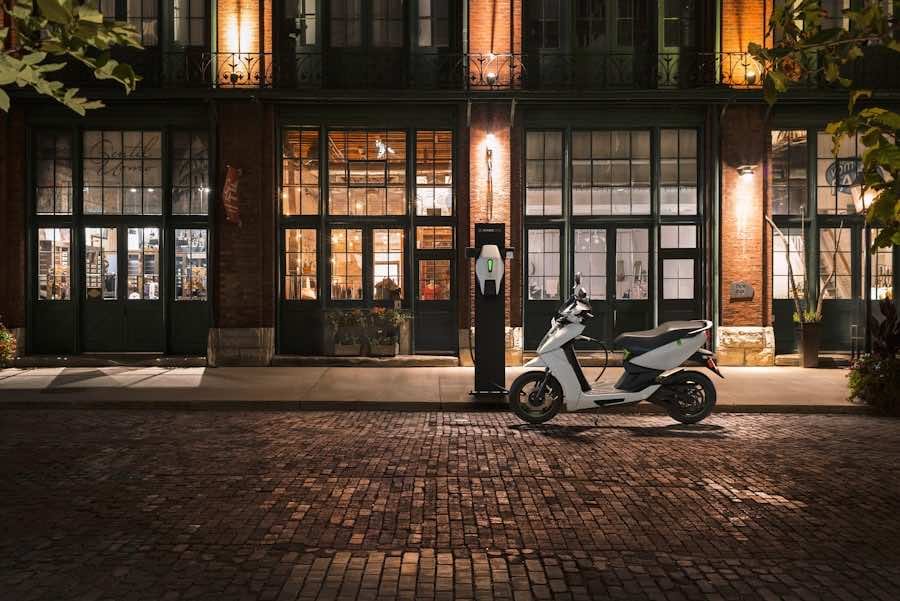Urban mobility solutions encompass a broad spectrum of strategies and technologies aimed at improving the movement of people and goods within urban environments. As cities continue to grow, the challenges associated with transportation become increasingly complex. Issues such as traffic congestion, air pollution, and inadequate public transport systems necessitate innovative approaches to urban mobility.
The rise of smart technologies, coupled with a growing awareness of environmental sustainability, has led to the development of diverse solutions that cater to the needs of urban dwellers. These solutions not only aim to enhance the efficiency of transportation systems but also strive to create a more sustainable and inclusive urban environment. The concept of urban mobility is not merely about moving from point A to point B; it involves a holistic understanding of how various modes of transport interact within the urban landscape.
This includes public transportation, shared mobility services, active transportation options like walking and cycling, and the integration of technology into these systems. As cities grapple with the implications of rapid urbanisation, the need for effective urban mobility solutions becomes paramount. By examining the various facets of urban mobility, we can better appreciate the intricate web of factors that influence how people navigate their cities.
Summary
- Urban mobility solutions are essential for addressing traffic congestion and air pollution in urban areas.
- Public transportation options play a crucial role in providing sustainable and efficient mobility for urban residents.
- Shared mobility services and carpooling offer convenient and cost-effective alternatives to private car ownership.
- Active transportation initiatives, such as walking and cycling, promote healthier and more environmentally friendly urban mobility.
- Innovative technology solutions, along with urban planning and infrastructure development, are key to shaping the future of urban mobility.
Public Transportation Options in Urban Areas
Public transportation serves as a backbone for urban mobility, providing essential services that connect residents to their workplaces, educational institutions, and recreational areas. Buses, trams, subways, and light rail systems are integral components of public transport networks in cities worldwide. For instance, London’s extensive Underground system not only facilitates the movement of millions daily but also significantly reduces reliance on private vehicles, thereby alleviating traffic congestion and lowering carbon emissions.
The efficiency and reliability of public transport can greatly influence urban dwellers’ choices regarding their mode of travel. Moreover, the accessibility of public transportation is a critical factor in promoting social equity within urban areas. Cities like Amsterdam have made significant strides in ensuring that public transport is accessible to all residents, including those with disabilities.
This commitment to inclusivity is reflected in the design of vehicles and stations, which are equipped with features such as ramps and audio-visual aids. Additionally, fare structures that accommodate low-income individuals can enhance public transport usage, fostering a more equitable urban environment. The integration of real-time tracking apps further enhances user experience by providing commuters with timely information about service availability and delays.
Shared Mobility Services and Carpooling

Shared mobility services have emerged as a transformative force in urban transportation, offering flexible alternatives to traditional car ownership. Ride-hailing platforms like Uber and Lyft have revolutionised how people access transportation, allowing users to summon a vehicle at their convenience through a smartphone app. These services not only provide an efficient means of travel but also contribute to reducing the number of vehicles on the road, thereby mitigating traffic congestion and lowering emissions.
In cities such as San Francisco, ride-sharing has become an integral part of the urban mobility landscape, complementing existing public transport options. Carpooling initiatives further enhance shared mobility by encouraging individuals to share rides with others travelling in the same direction. Platforms like BlaBlaCar facilitate long-distance carpooling, while local initiatives often focus on daily commutes.
For example, in cities like Los Angeles, carpool lanes have been established to incentivise shared rides, allowing those who carpool to bypass congested traffic. This not only promotes social interaction among commuters but also optimises road usage by reducing the number of single-occupancy vehicles. The success of these initiatives hinges on effective marketing and community engagement to raise awareness about the benefits of shared mobility.
Active Transportation and Walking/Cycling Initiatives
Active transportation encompasses modes of travel that require physical activity, primarily walking and cycling. As cities strive to promote healthier lifestyles and reduce their carbon footprints, initiatives aimed at encouraging active transportation have gained traction. Infrastructure improvements such as dedicated bike lanes, pedestrian-friendly streetscapes, and safe crossings are essential for fostering an environment conducive to walking and cycling.
Cities like Copenhagen have set a benchmark in this regard, with over 60% of residents commuting by bicycle daily due to extensive cycling infrastructure and supportive policies. Moreover, public health campaigns play a crucial role in promoting active transportation. Initiatives such as “Walk to Work” days or community cycling events can raise awareness about the benefits of incorporating physical activity into daily routines.
In addition to improving individual health outcomes, active transportation contributes to reduced traffic congestion and lower emissions. The integration of bike-sharing schemes in urban areas further enhances accessibility to cycling as a mode of transport. For instance, London’s Santander Cycles scheme has made cycling more accessible for both residents and tourists alike, encouraging a shift towards more sustainable travel behaviours.
Innovative Technology Solutions for Urban Mobility
The advent of technology has ushered in a new era for urban mobility solutions, enabling cities to leverage data and connectivity to enhance transportation systems. Smart traffic management systems utilise real-time data analytics to optimise traffic flow and reduce congestion. For example, cities like Barcelona have implemented adaptive traffic signals that adjust their timing based on current traffic conditions, resulting in smoother vehicular movement and reduced waiting times at intersections.
Furthermore, the integration of mobile applications into urban mobility has transformed how residents navigate their cities. Apps that provide real-time information on public transport schedules, traffic conditions, and available shared mobility options empower users to make informed decisions about their travel routes. Additionally, advancements in electric vehicle (EV) technology are reshaping urban transport landscapes.
Cities are increasingly investing in EV charging infrastructure to support the transition towards cleaner vehicles. For instance, Oslo has made significant investments in charging stations throughout the city, encouraging residents to adopt electric cars as a sustainable alternative.
Urban Planning and Infrastructure for Sustainable Mobility

Effective urban planning is fundamental to creating an environment that supports sustainable mobility solutions. Zoning regulations that prioritise mixed-use developments can reduce the need for long commutes by placing residential areas in close proximity to workplaces and amenities. Cities like Portland have embraced this approach by promoting walkable neighbourhoods that encourage residents to utilise active transportation modes.
Moreover, integrating green spaces into urban design can enhance the appeal of walking and cycling as viable transportation options. Parks and green corridors not only provide recreational opportunities but also contribute to improved air quality and biodiversity within urban settings. The implementation of complete streets policies further exemplifies how urban planning can facilitate sustainable mobility by ensuring that roadways accommodate all users—pedestrians, cyclists, public transport users, and motorists alike.
Addressing Traffic Congestion and Air Pollution in Urban Areas
Traffic congestion remains one of the most pressing challenges facing urban areas worldwide. The economic costs associated with lost productivity due to traffic delays are substantial, prompting cities to seek innovative solutions to alleviate congestion. Congestion pricing has emerged as a viable strategy in cities like Singapore and London, where drivers are charged fees for entering congested zones during peak hours.
This approach not only discourages unnecessary trips but also generates revenue that can be reinvested into public transport infrastructure. Air pollution is another critical concern linked to urban mobility. The World Health Organisation has identified air quality as a significant public health issue, with millions of premature deaths attributed to pollution-related diseases annually.
Transitioning towards cleaner modes of transport is essential for improving air quality in urban areas. Initiatives such as low-emission zones (LEZs) restrict access for high-polluting vehicles in designated areas, encouraging the adoption of electric or hybrid vehicles. Cities like Madrid have implemented LEZs successfully, resulting in measurable improvements in air quality.
Future Trends and Challenges in Urban Mobility Solutions
As urbanisation continues unabated, future trends in urban mobility will likely be shaped by technological advancements and changing societal attitudes towards transportation. The rise of autonomous vehicles presents both opportunities and challenges for urban mobility solutions. While self-driving cars could potentially reduce accidents and improve traffic flow, they also raise questions about infrastructure adaptation and regulatory frameworks.
Additionally, the increasing emphasis on sustainability will drive innovations in public transport systems and active transportation initiatives. Cities will need to invest in resilient infrastructure that can withstand climate change impacts while promoting environmentally friendly modes of transport. The challenge lies in balancing technological advancements with social equity considerations; ensuring that all residents have access to efficient and affordable transportation options will be paramount.
In conclusion, navigating the complexities of urban mobility requires a multifaceted approach that encompasses various modes of transport, innovative technologies, and inclusive planning strategies. As cities evolve, so too must our understanding of how best to facilitate movement within them while prioritising sustainability and accessibility for all residents.
Urban mobility solutions are crucial for addressing the challenges of congestion and pollution in cities. One related article that explores the use of new technology in the primary sector can be found here. This article discusses how advancements in technology can revolutionise industries and improve efficiency. By implementing innovative solutions, urban areas can create more sustainable and efficient transportation systems. Additionally, local businesses can play a key role in boosting revenue and supporting economic growth, as outlined in another article here. By working together, businesses and governments can create a more sustainable and prosperous future for urban mobility.
FAQs
What are urban mobility solutions?
Urban mobility solutions refer to the various methods and technologies used to improve transportation and movement within urban areas. These solutions aim to address issues such as traffic congestion, pollution, and limited access to public transportation.
What are some examples of urban mobility solutions?
Examples of urban mobility solutions include public transportation systems (such as buses, trains, and trams), bike-sharing programs, car-sharing services, pedestrian-friendly infrastructure, electric vehicles, and smart traffic management systems.
How do urban mobility solutions benefit cities?
Urban mobility solutions can benefit cities by reducing traffic congestion, improving air quality, promoting sustainable transportation options, and enhancing overall accessibility and connectivity within urban areas. These solutions can also contribute to economic growth and improved quality of life for residents.
What are the challenges in implementing urban mobility solutions?
Challenges in implementing urban mobility solutions include funding and investment, infrastructure development, public acceptance and behaviour change, regulatory and policy barriers, and the integration of new technologies with existing transportation systems.
How can urban mobility solutions be made more sustainable?
Urban mobility solutions can be made more sustainable by promoting the use of public transportation, encouraging walking and cycling, investing in electric and low-emission vehicles, implementing smart city technologies for traffic management, and prioritising the development of green and pedestrian-friendly urban spaces.
